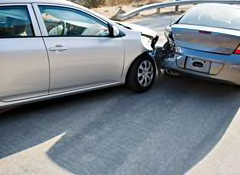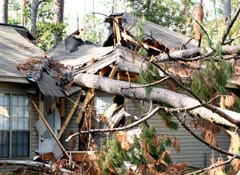Car insurance: You buy only the minimum coverage

Although the reimbursem*nt cost for a car-crash injury that doesn't leave the victim incapacitated averages $22,000, the minimum bodily injury (BI) liability coverage allowed by law is well below that in 16 states, including California, Florida, and New Jersey. No state BI minimum covers the higher average cost of more-severe incapacitating injuries—$69,000.
And the liability minimums in five states—California, Massachusetts, New Jersey, Ohio, and Pennsylvania—don't even cover the $9,000 average cost of a car crash that causes only property damage and nondisabling injuries. Since some accidents cost much more than average, you should never let state minimums guide your coverage limits.
Liability
Buy at least standard 100/300/100 coverage, which translates into $100,000 coverage per person for bodily injury, including death, that you cause to others; $300,000 in BI per accident; and property damage up to $100,000. If you have a high net worth, boost your BI coverage to 250/500/100.
Medical payments or personal injury protection
Twelve no-fault accident states, which generally limit the circ*mstances under which victims can sue for injuries, require one or the other of this coverage. In other states, this coverage is optional. Medpay and PIP, as they're known, pay for relatively small medical expenses for you and others who may have been injured in an car accident, regardless of who's at fault. PIP might also cover lost wages, loss of services, and funeral expenses.
The concept behind these coverages is to pay quickly and without the issue of blame, so that the trouble and expense of a victim's threatened or actual lawsuit might be avoided, thus reducing claim costs and increasing the likelihood of timely and appropriate medical care.Talk with your insurance agent to determine the right amount for you.
Related Topics
- Car insurance buying guide
- Cutting car insurance costs
Collision/comprehensive
Collision covers damage to your car that's not covered by another driver's policy. Comprehensive covers theft or damage from such things as fire, flood, falling trees, hail, hurricane, or animal strikes.
Deductibles for both can run from zero to $1,000. The lower your out-of-pocket deductible, the higher your annual premiums. We recommend that you opt for a higher deductible to reduce your premiums, but you should have that amount set aside in case your luck runs out.
We usually recommend that you drop collision and/or comprehensive coverage when the annual premium equals or exceeds 10 percent of your car's cash value. Otherwise, you could end up paying more over time in premiums and a deductible than you would recoup for repair or replacement of your damaged or totaled vehicle, since the insurer will never pay out more than the vehicle's cash value, less the deductible.
Uninsured/underinsured motorist
This is a definite buy. Purchase the same limits here as those on your own liability coverage. Uninsured coverage pays for damage to your car and passenger injuries caused by an at-fault driver who doesn't have liability insurance or who hits and runs. Almost 14 percent of motorists are uninsured, but the incidence varies by state, from a low of 4 percent in Maine and Massachusetts to 28 percent in Mississippi. Underinsured protection kicks in when your damages are greater than the other driver's liability insurance limit—perhaps because he or she bought only the state minimum.
Home insurance: You fail to add coverage

Although the standard homeowners insurance policy covers damage caused by certain major threats—fire, hail, wind, lightning, falling trees, tornadoes, cars, and vandals—it doesn't cover some others. Those include earthquakes, hurricanes in many locations, and flooding, whether caused by bursting levees, overflowing rivers, or a spring thaw. So you must buy extra coverage for those perils.
Standard coverage
Standard policies, called HO2 or HO3 policies, cover damage to your home and other structures on your property, such as a garage, barn, shed, and fencing. Insure the "replacement value" of your home, which is often higher than its tax-assessment value and market price. You should also opt for two extra-cost riders: the "extended coverage" rider, which adds up to 30 percent to replacement value to cover higher costs for materials and labor that often follow a natural disaster, and the "ordinance" or "law endorsem*nt" rider, which pays the higher cost of making repairs that conform to current building codes.
Standard policies also cover your furniture, electronics, clothing, and other belongings as well as your liability for people injured in your home or for damage that you, your children, and your pets cause to others. Liability coverage typically starts at $100,000; you should buy at least $300,000. These extras will raise your premiums, of course, so keep that in check by taking a $500 or $1,000 deductible, and be sure to keep that amount in savings in the event of a loss.
Flood
A standard policy doesn't cover flood damage, which can be quite expensive. Just an inch of water can cause $21,000 in damage, mostly to carpeting and finished flooring, and for cleanup. Private insurers usually don't cover flooding at all, but you can buy federally sponsored protection from your agent through the National Flood Insurance Program. (Go to floodsmart.gov for information). If you live in a high-risk area, your mortgage lender probably requires you to have flood insurance. But even if your risk is moderate to low, you should consider it because premiums are commensurately lower than standard- or high-risk coverage.
Sewer backups
When the toilet backs up or the sump pump fails, neither flood insurance nor the standard homeowners policy will cover it. Buy separate coverage or an endorsem*nt for $40 to $50 a year.

Hurricane/wind
Your basic policy might provide coverage for damage caused by hurricanes, but 18 states along the Atlantic and Gulf coasts, from Texas to Maine, as well as Hawaii and the District of Columbia, allow insurers to charge higher hurricane deductibles. They're triggered by officially designated storms under a variety of circ*mstances specified in your contract, and they supersede your standard deductible.
Hurricane deductibles typically range from 1 to 5 percent of the home's insured value. So for a house insured for $300,000, you would have to pay the first $3,000 to $15,000 out-of-pocket before your insurance company pays a dime.
Insurers have abandoned some hurricane-prone areas, leaving homeowners in those places to depend on separate hurricane policies from state-run insurance pools, such as the Texas Windstorm Insurance Association, Florida's Citizens Property Insurance, and the North Carolina Joint Underwriting Association. That coverage is well worth considering.
Earthquake
The 5.8 magnitude earthquake that rocked Virginia and a swath of the East Coast in August 2011 was a wake-up call for those who thought California had a monopoly on seismic activity. Standard homeowners policies exclude earthquakes, but most insurers sell earthquake coverage as an endorsem*nt or separate policy, and California residents can buy it from insurers in the state-managed California Earthquake Authority. Expect higher earthquake deductibles in more active areas.
Valuables
If you own expensive antique furniture, furs, jewelry, silverware, artwork, or other valuables, such as a coin collection or baseball memorabilia, you should buy a special endorsem*nt or "floater" to cover their full value in the event they're lost, stolen, or destroyed.
Household workers
Casual and occasional workers—a babysitter or a neighborhood kid mowing your lawn—are typically covered by the standard policy for injuries sustained on your premises. But for permanent full- or part-time domestic employees, also consider having workers compensation insurance, which covers them if they're injured on the job. Check if other workers employed by small businesses—for example, plumbers, home health aides, or gardeners—are insured by their companies.
Renters insurance: You assume you don't need it

Although landlords buy insurance to protect the structure of rental units against loss, that policy doesn't protect tenants' personal property. So consider buying your own policy to cover your stuff.
Standard renters insurance
Tenants need this coverage, known as HO4, to protect the loss of their personal property due to fire, theft, and other perils. The policies also include liability coverage.
Add-on coverage
Like a standard home owners policy, renters insurance doesn't cover property losses due to floods, earthquakes, sewer backups, and, in some areas, hurricanes. So you must buy additional specific policies or endorsem*nts to protect your property from damage or loss caused by those threats.
Personal liability insurance: You don't think you're a target
You might not be in a class with the billionaire Warren Buffet, but if you've accumulated assets worth six or seven figures—including your home, investment assets, and vehicles—others might see an accident with you as a golden opportunity for litigation. So you should consider boosting your liability coverage limits above and beyond the standard levels of your other policies.
Personal umbrella liability
This kind of policy adds another layer of liability protection beyond the limits of your auto, home, or renters policies. Coverage limits start at $1 million for premiums of about $150 to $300 a year. You'll pay an additional $50 to $75 per year for every $1 million in protection beyond that.
Think your home business is covered?
Because of the poor economy and the technological ease of starting a company, more Americans are operating small businesses from their homes. If you're one of them, make sure your liability, business equipment, inventory, and other assets and risks are properly insured. And be aware that your homeowners and renters insurance doesn't cover—and specifically excludes—most home-based business activities.
A home-business endorsem*nt on your homeowners or renters policy is the least you should have to protect against losses of your business property. But an endorsem*nt doesn't cover liability losses related to your business. To get that, you'll need to step up to a small-business insurance package, which protects business property at home and on the road and covers liability, theft, and some loss of income. A basic business-owners policy offers more liability coverage and expanded loss-of-income protection.
You can buy small-business coverage for as little as $150 a year, so it's affordable and well worth the price. Find it by first asking an agent from the company that already provides your car, homeowners, or renters insurance. Trade associations for your line of business might also offer coverage.